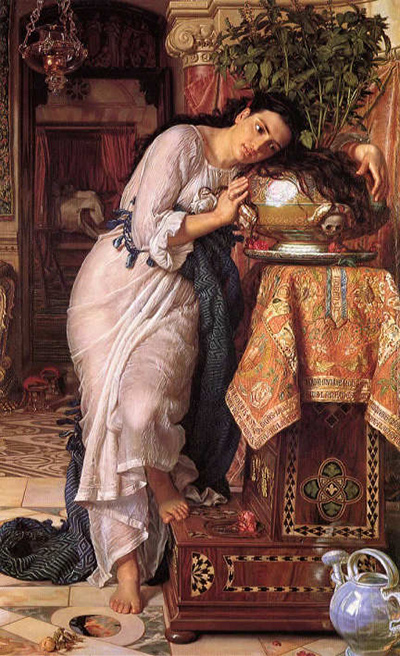Completed in 1868, Isabella and the Pot of Basil by William Holman Hunt (one of the founders of the pre-Raphaelite movement) is a striking portrayal of a scene from the poem by John Keats.
Though the image may look on first glance as a quiet, peaceful scene, it is in fact depicting a woman leaning over the pot in which she holds the severed head of her murdered lover, whose name was Lorenzo.
There are many layers to this painting.
In the background the viewer can see the unmade bed from which Isabella has just risen. She now stands in the foreground with her long hair draped over the shrine she has made for her lover's head, with the pot of basil being pride of place.
The rich, lush details provide many things to draw the eye, but it is constantly pulled back to the beautiful woman wrapped up in her tragedy.
The morbid addition of the carved skulls into the pot is an interesting detail, and is one of the only clues of a darker meaning for those not familiar with the poem by Keats.
To a casual observer, this could be a jarring detail; the peaceful surroundings with beautiful furniture and decoration, then the simple small skulls that seem to catch the eye very quickly. This contrast helps provide the emotion that's found in the painting.
Aside from the narrative poem that was the source of inspiration for the scene, there was more tragedy in this art. William Holman Hunt's wife had died in childbirth not long before he painted this, and he used her facial features as inspiration for Isabella as a memorial to her.
It is touching to know that the artist combined his talent with his passion for his wife in the creation of this painting, and is perhaps the reason the piece stands out in many peoples' minds. It gives layers of both meaning and form, and creates the kind of image and emotion that is hard to forget.




